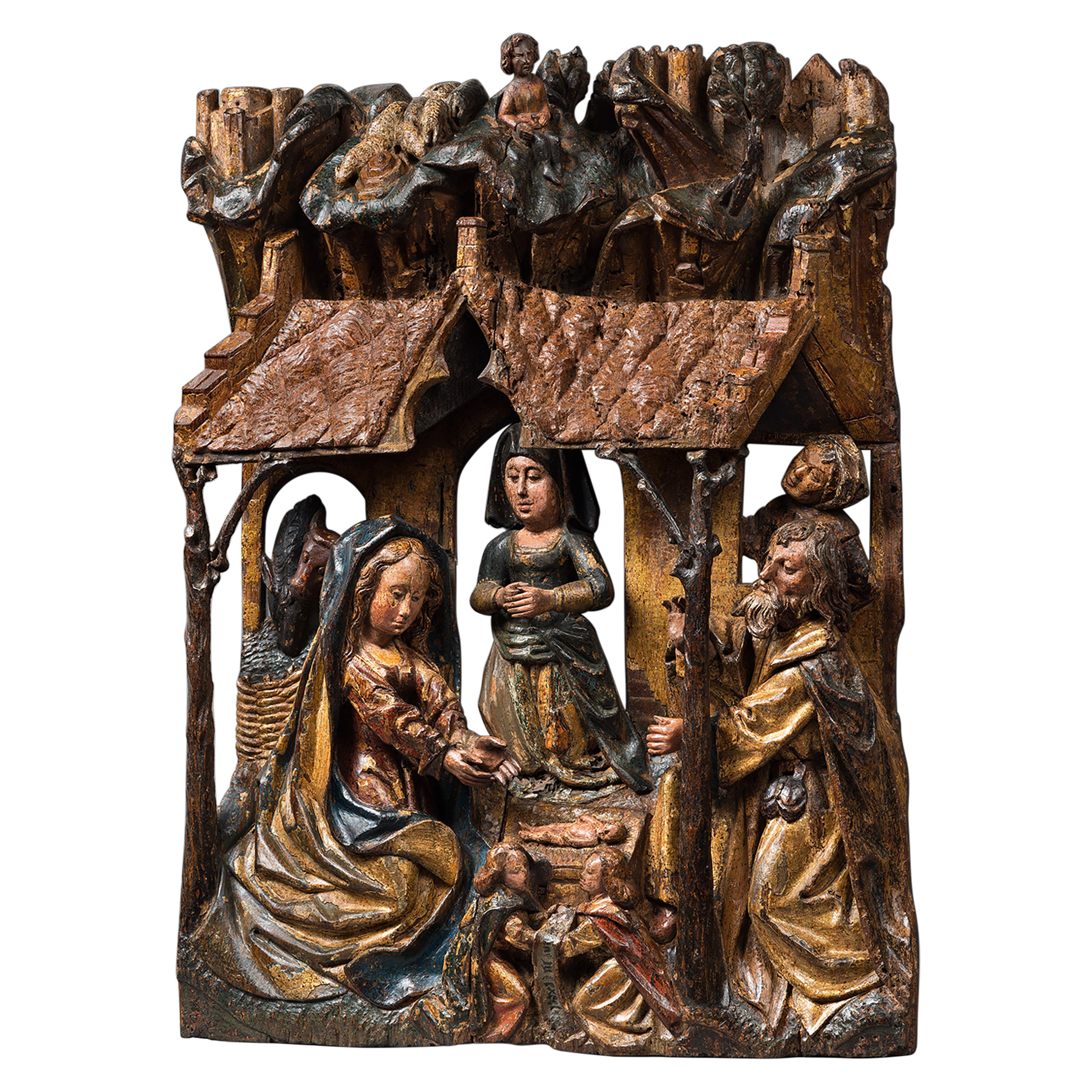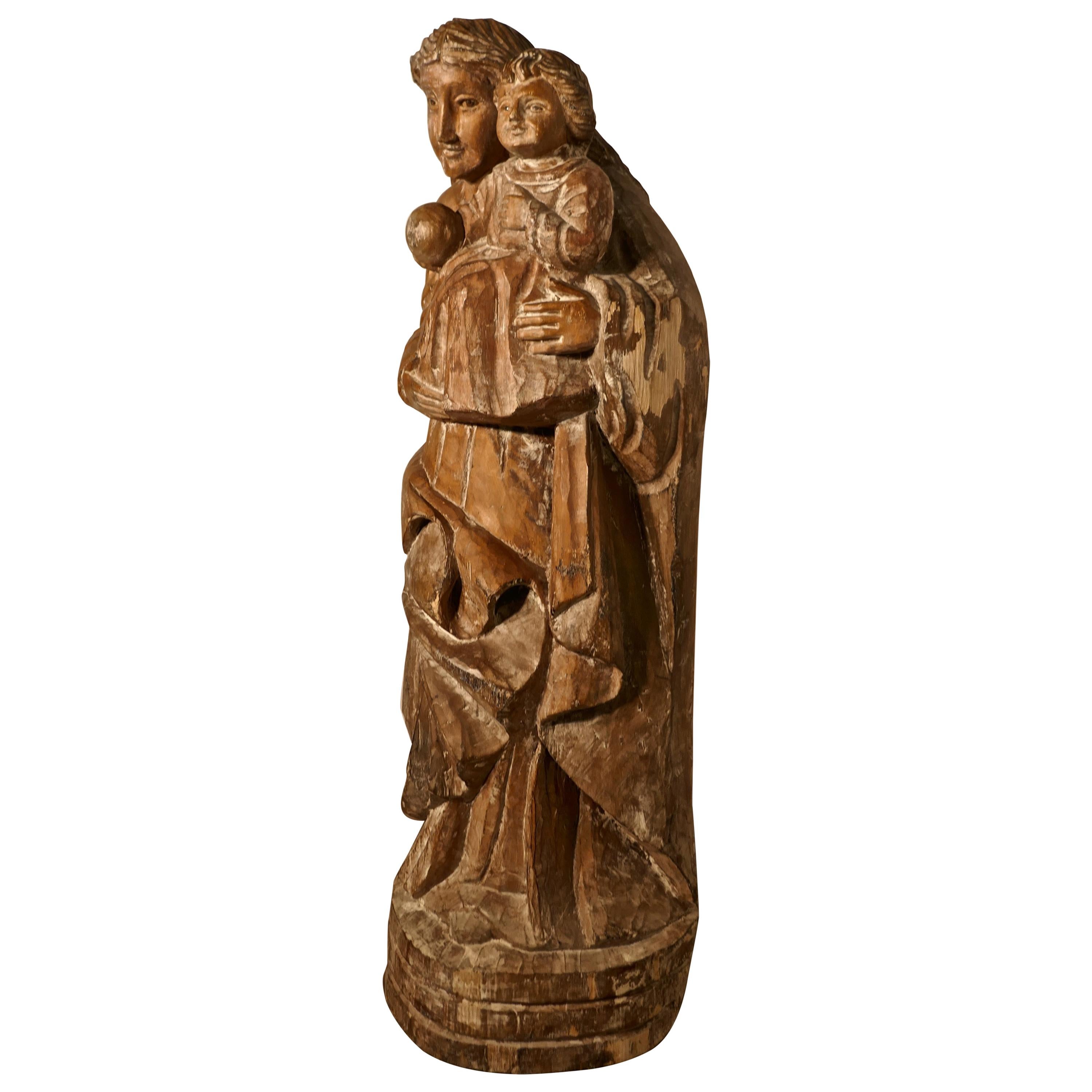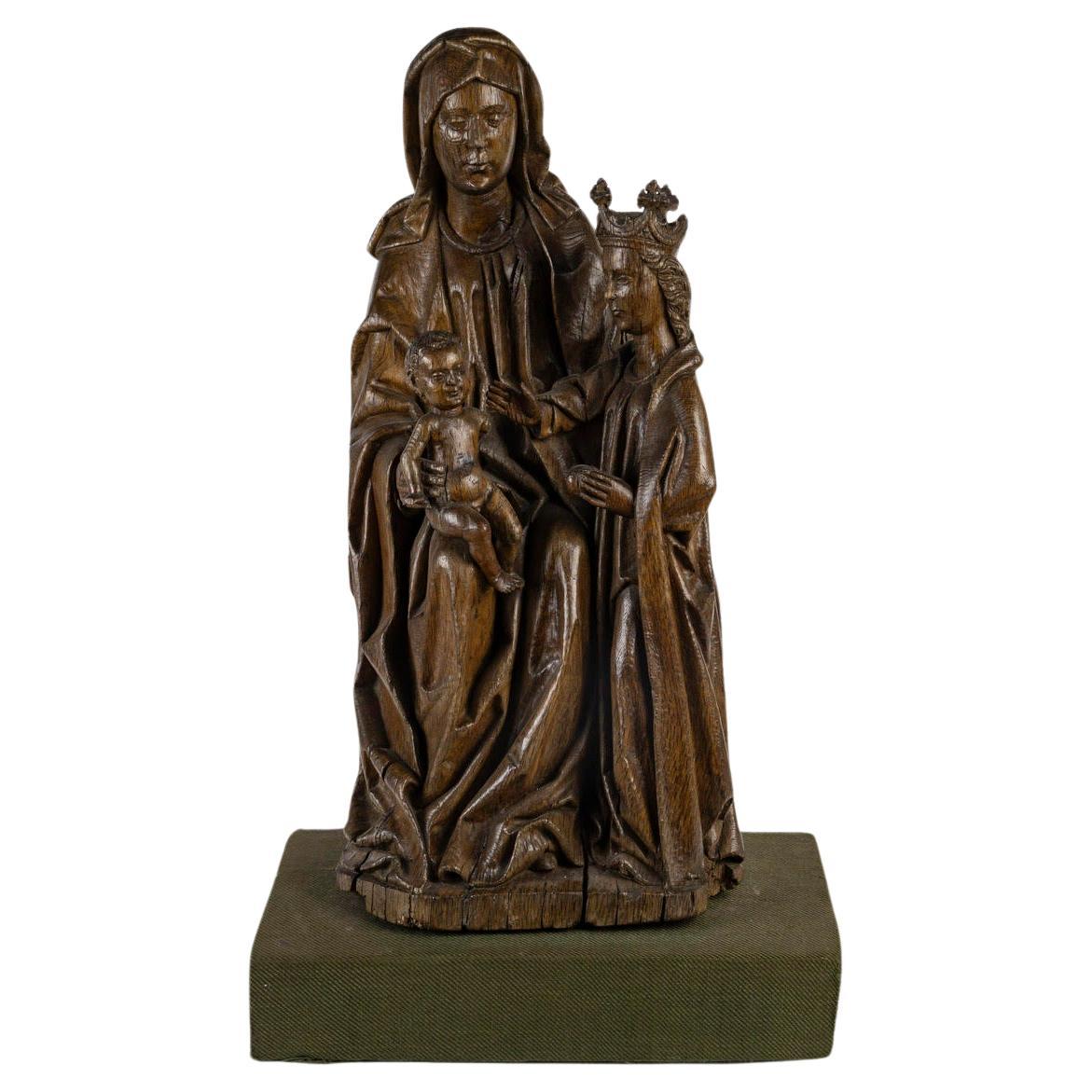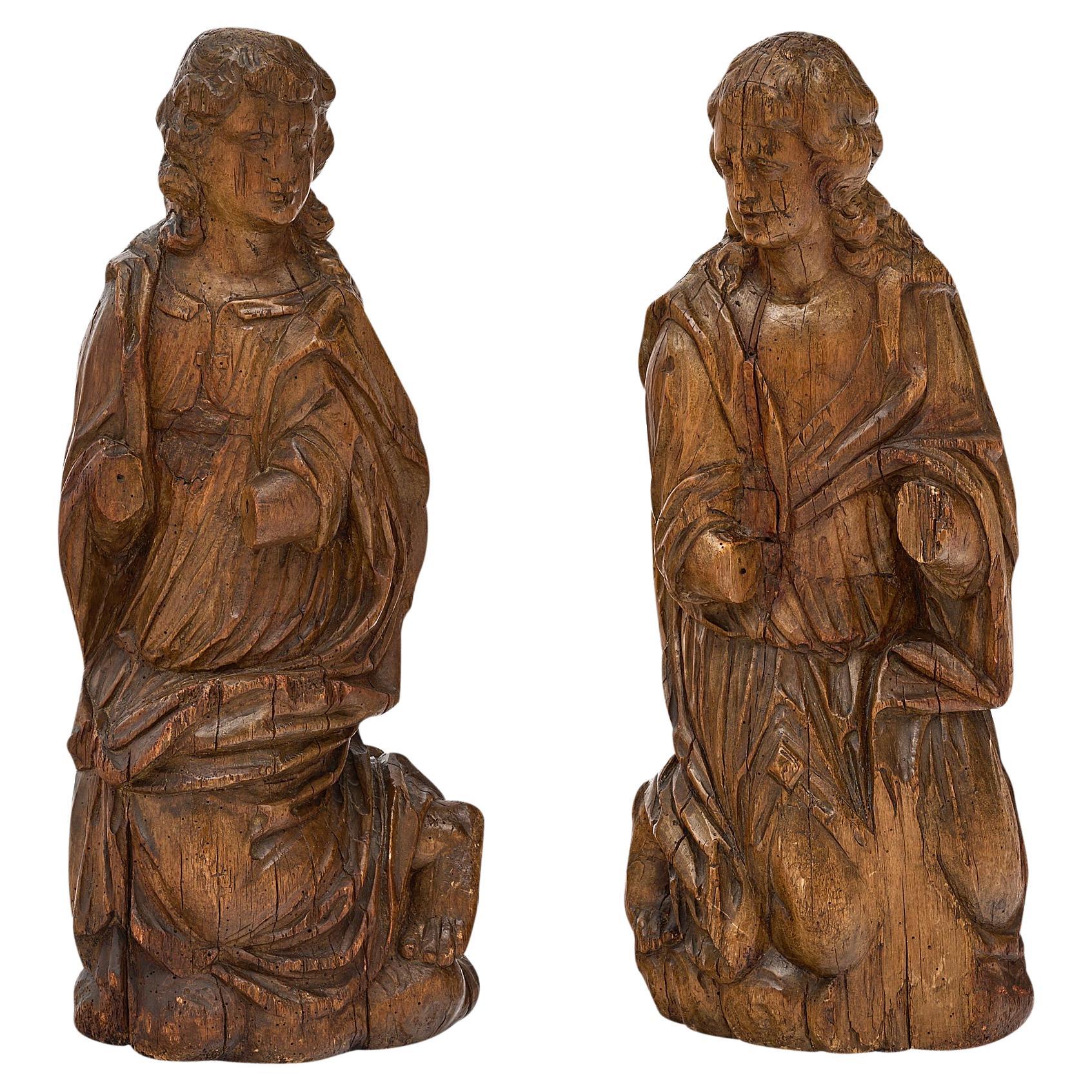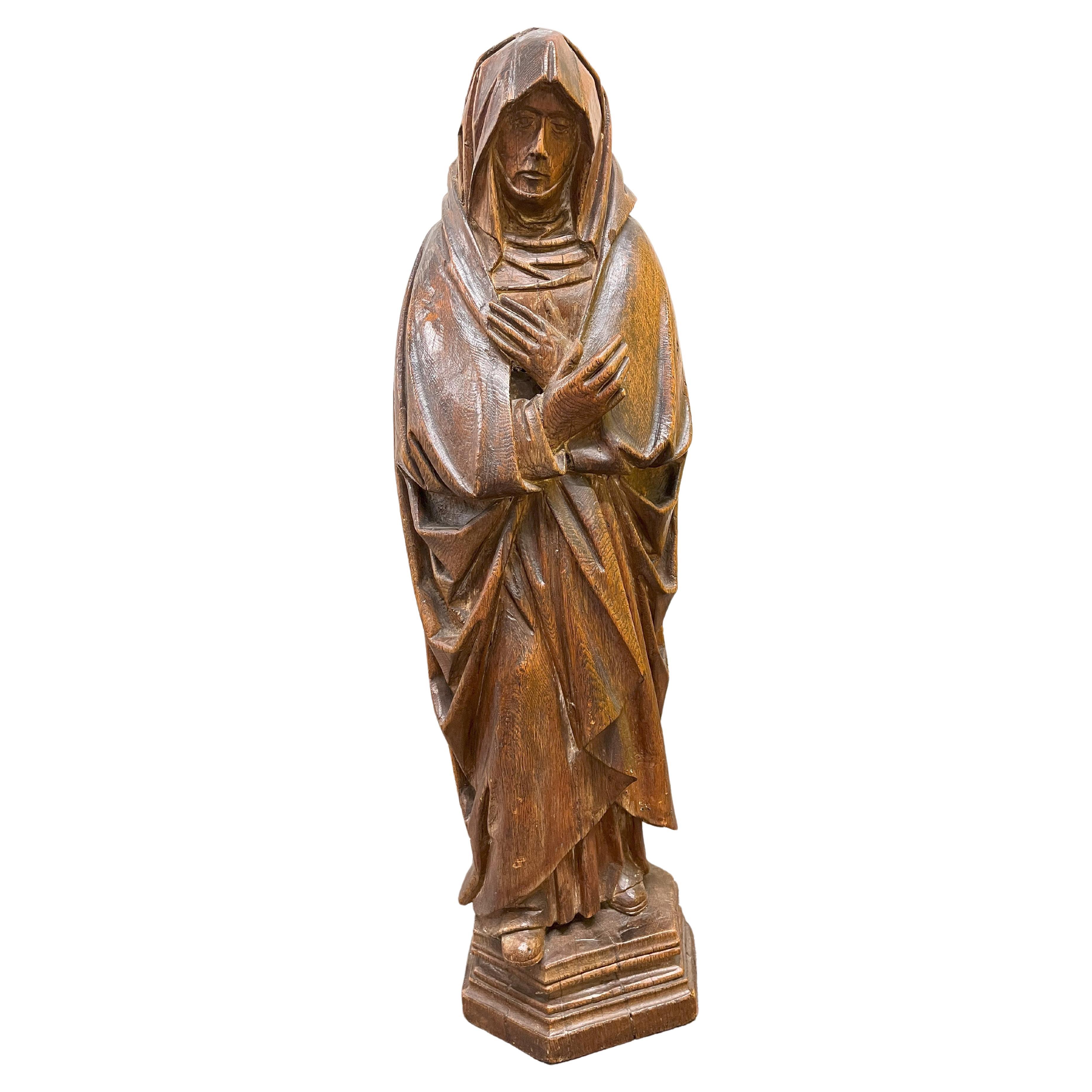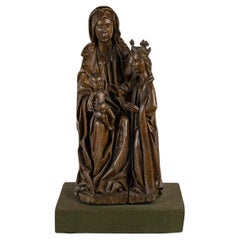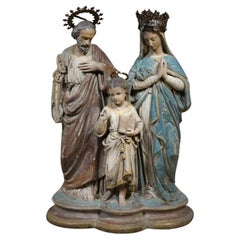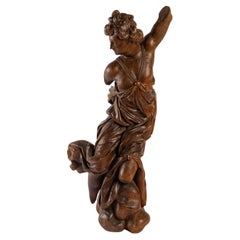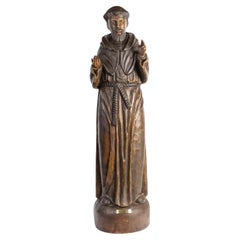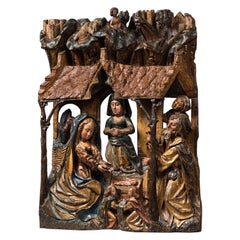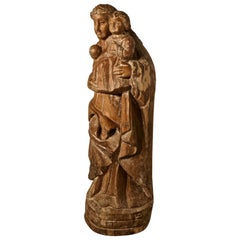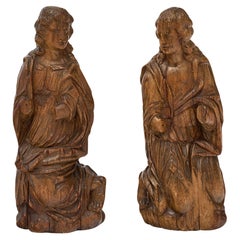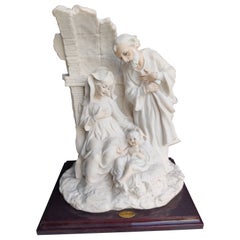Items Similar to Religious Sculpture Representing the Nativity, Carved Wood from the 16th Century
Want more images or videos?
Request additional images or videos from the seller
1 of 8
Religious Sculpture Representing the Nativity, Carved Wood from the 16th Century
$11,857.75
£8,781.58
€9,950
CA$16,336.60
A$18,163.46
CHF 9,564.16
MX$220,377.45
NOK 121,087.01
SEK 113,186.84
DKK 75,737.72
About the Item
Religious sculpture representing the nativity, carved wood from the 16th century.
Carved wood sculpture, walnut wood and oak wood base, sculpture representing the nativity, circa 16th century.
H: 70cm. W: 51cm, D: 11cm
- Dimensions:Height: 27.56 in (70 cm)Width: 20.08 in (51 cm)Depth: 4.34 in (11 cm)
- Style:Neoclassical (Of the Period)
- Materials and Techniques:
- Place of Origin:
- Period:
- Date of Manufacture:16th century
- Condition:Wear consistent with age and use.
- Seller Location:Saint-Ouen, FR
- Reference Number:1stDibs: LU1530240683202
About the Seller
4.8
Platinum Seller
Premium sellers with a 4.7+ rating and 24-hour response times
Established in 2003
1stDibs seller since 2015
346 sales on 1stDibs
Typical response time: 1 hour
- ShippingRetrieving quote...Shipping from: Saint-Ouen, France
- Return Policy
Authenticity Guarantee
In the unlikely event there’s an issue with an item’s authenticity, contact us within 1 year for a full refund. DetailsMoney-Back Guarantee
If your item is not as described, is damaged in transit, or does not arrive, contact us within 7 days for a full refund. Details24-Hour Cancellation
You have a 24-hour grace period in which to reconsider your purchase, with no questions asked.Vetted Professional Sellers
Our world-class sellers must adhere to strict standards for service and quality, maintaining the integrity of our listings.Price-Match Guarantee
If you find that a seller listed the same item for a lower price elsewhere, we’ll match it.Trusted Global Delivery
Our best-in-class carrier network provides specialized shipping options worldwide, including custom delivery.More From This Seller
View AllOak Sculpture of Saint Anne, 16th Century.
Located in Saint-Ouen, FR
Oak sculpture of Saint Anne, 16th century.
Large oak sculpture of Saint Anne. Work from the Upper Rhine, Basel region. First third of the 16th century.
An arm is missing from the i...
Category
Antique 16th Century French Renaissance Figurative Sculptures
Materials
Oak
Religious Sculpture in Plaster, 20th Century.
Located in Saint-Ouen, FR
Religious sculpture in plaster, 20th century.
20th century religious sculpture in painted plaster.
H: 45cm, W: 32cm, D: 16cm
Category
20th Century French Renaissance Revival Figurative Sculptures
Materials
Plaster
Carved Wood Sculpture from the 19th Century
Located in Saint-Ouen, FR
Carved wood sculpture from the 19th century.
Measures: H: 54 cm, W: 26 cm, D: 18 cm.
Category
Antique 19th Century European Louis XV Figurative Sculptures
Materials
Wood
Large Patinated Solid Wood Sculpture, Early 20th Century.
Located in Saint-Ouen, FR
Large patinated solid wood sculpture, early 20th century.
Patinated solid wood sculpture, religious art, early 20th century.
H: 84 cm, W: 25 cm, D: 22 cm
Category
Early 20th Century French Folk Art Figurative Sculptures
Materials
Wood
Carved Oak Sculpture Representing Saint Louis de Gonzague, 18th Century.
Located in Saint-Ouen, FR
Carved oak sculpture representing Saint Louis de Gonzague, 18th century.
An 18th century Italian carving of Saint Louis de Gonzague in carved oak...
Category
Antique 18th Century Italian Louis XV Figurative Sculptures
Materials
Oak
Oak Sculpture of Christ Emerging from the Tomb, Surrounded by Roman Soldiers.
Located in Saint-Ouen, FR
Carved oak sculpture of Christ emerging from the tomb, surrounded by Roman soldiers, 17th century.
Carving of Christ emerging from the tomb, surr...
Category
Antique 17th Century European Renaissance Figurative Sculptures
Materials
Oak
You May Also Like
Late 15th Century Polychrome Wood Carving Depicting the Nativity
Located in Saint-Ouen, FR
While the birth of Christ is briefly told in the Gospel of Luke (2, 7) it is in the apocryphal texts that we find most of the elements and details that have then inspired artists. As of the 14th century and even more of the 15th century the subject of the Adoration of the Child replaces in Western art the scene of the Birth, much favoured in Byzantine art. Instead of being depicted lying with the new-born swathed in the manger, the Virgin is now kneeling, her hands joined in prayer in front of the naked child. This change was probably hastened by the popularity of the visions of Saint Bridget of Sweden to whom the Virgin allegedly appeared to show how she had given birth to Jesus (Visions, VII, chap. 21).
Sheltered by a thatch-roofed structure the Virgin is kneeling in front of the Child Jesus. She wears a magnificent red dress under a large gold cloak. Her curled blond hair is partially veiled. The newborn is lying on a straw mat. Joseph is depicted with a parted beard and stands opposite from the Virgin. He wears a tunic and a coat with a purse hanging from the belt. His costume reminds us of the long journey him and Mary have accomplished to reach Bethlehem.
Two other women are present. One is looking through the stable’s window to observe the Holy Family while another one kneels in prayer in front of the divine child. The rich costume of the lady might indicate she is a donator.
However they could also both represent the women who took part in the birth of Christ, Zelemi and Salome. Salome, incredulous did not believe in the virginal conception of Mary and she is represented far from the scene. The artist has depicted her with an expression of doubt on her face. Zelemi, on the contrary, is a believer. She is rewarded by a place of honour at the heart of the scene, close to Mary.
To the left the donkey and ox that have accompanied Mary and Joseph to Bethlehem observe quietly the scene.
On the foreground two angels hold a scroll reading an excerpt from the Gloria : “/Gloria/ in excelsis /Deo/.” One of the angels wears a blue cape while the other’s is red Those two colours are very significant as during Middle-Ages blue symbolises hope and red charity. Together they express the hope in redemption thanks to the advent of Christ and his sacrifice to come.
Above the main scene, up a cliff, a small shepherd lets his herd of sheep graze amidst the trees. He is framed by two walled cities.
This wood carving is the work of a very skilled and inventive artist. The piece bears witness to his exceptional talent. The realism of the scene is emphasised by the amount of details depicted. The refinement of the carving itself is highlighted by the well preserved polychromy.
This key moment of the New Testament is set in a contemporary context thanks to the clothes of the characters and the scenes of rural life. The universal dimension of the scene is intensified while allowing contemporary viewers to grasp its meaning more easily.
This care for details, the picturesque realism as well as the extraordinary rendition of the cloths suggest it was made by a Flemish artist during the late 15th century.
This relief can be compared with the panel of the Nativity from the Saint-Vaast altarpiece made by Jacques Daret between 1433 and 1435, today in Madrid’s Thyssen-Bronemisza Museum.
Literature
Louis Réau, Iconographie de l’Art chrétien...
Category
Antique 15th Century and Earlier Dutch Gothic Figurative Sculptures
Materials
Wood
18th Century French Carved Statue of Madonna and Child
Located in Godshill, Isle of Wight
18th century French carved statue of Madonna and Child.
This charming piece has been rescued from a ecclesiastic clear out in the southern part of France
The statue is carved fro...
Category
Antique Mid-18th Century Mission Figurative Sculptures
French Antique Oak Statues
Located in Austin, TX
Pair of French church sculptures made of solid oak. These two antique figures are from a church in a private village in Luceram, in the south of France.
Category
Antique Early 1600s French Figurative Sculptures
Materials
Oak
$11,200 / set
"The Nativity" Italian sculpture signed by Giuseppe Armani
Located in Cincinnati, OH
"The Nativity" Italian sculpture signed by G. Armani
The piece is mounted on a wood base with a brass plate "G. Armani"
The back is marked 1983 Florence and also an "N" with a crown ...
Category
Vintage 1980s Italian Figurative Sculptures
Materials
Porcelain, Wood
$556 Sale Price
20% Off
Antique Oak Sculpture – 'The Grief of Mary' , circa 1500
Located in Basildon, GB
A Late 15th/Early 16th Century Oak Sculpture depicting ‘The Grief of Mary’, carved almost in the round with Mary wearing a head scarf, neckerchief and...
Category
Antique 15th Century and Earlier European Gothic Religious Items
Materials
Oak
Carved Wood Depicting the Resurrection of Christ
Located in Saint-Ouen, FR
Carved wood depicting the resurrection of Christ
ORIGIN : SOUTHERN NETHERLANDS, ANTWERP
PERIOD : EARLY 16th CENTURY
Height : 67.5 cm
Len...
Category
Antique 16th Century Figurative Sculptures
Materials
Oak
More Ways To Browse
16th Century French Furniture
Antique Carved Wood Religious Sculpture
Antique Nativities
Wood Nativity
Carved Nativity
Carved Wood Nativity
Yoga Furniture
Antique Roof Tile
Battle Shield
Chariot Sculpture
Geisha Study
Italian Putti Carved Wood
Mars Venus
Polychrome Putti
Reclining Marble Sculpture
Stone Male Sculptures
Venetian Mask
Adjustable Sculpture Stand
